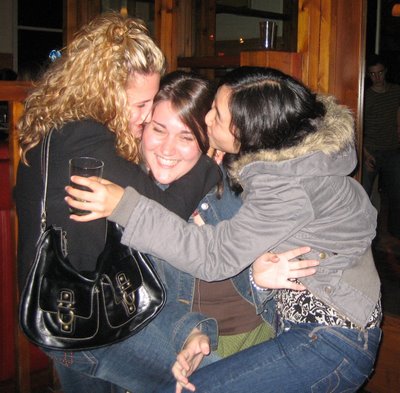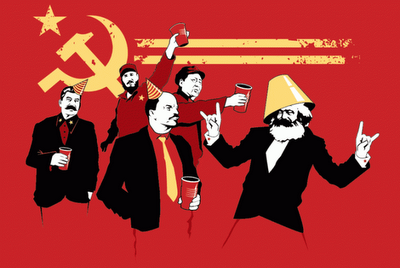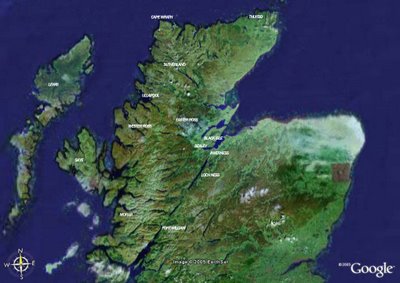[In a departure from my usual silly, snarky style, this post will have a markedly more somber tone to it. Given both the date of publication (shortly following Armistice Day) and my own personal connections with the story of Culloden, a little gravity seemed warranted.]
Six miles outside of the Highland capital of Inverness sits a boggy plain called Drummossie Moor, located on which is the site of one of the most important battles fought on Scottish soil: the Battle of Culloden.
Even those possessing the most rudimentary knowledge of Scotland's bloody history could guess the outcome of the 1746 clash between a Highland Jacobite army and Government troops. However, it was not the spectacular defeat of the Jacobites that cemented Culloden's position in Scottish history and lore; it was manner in which the British government set out systematically to destroy the ancient Highland way of life--and the repercussions of the Crown's actions--that forever changed Scotland (and, it can be argued, the world).

The battlefield, as seen from the visitor's centre.
The Battle of Culloden holds a special place in my heart, despite my own lack of Scottish ancestry. My last two years of high school, I spent the better part of eighteen months researching, producing, and refining a thesis on the influence of eighteenth-, nineteenth-, and twentieth-century Jacobite literature on the formation of a Scottish national identity. My visit to the battlefield in October was an academic homecoming of sorts, the realization of an admittedly geeky dream five years in the making.
To the average American, the Jacobite Wars, fought intermittently between 1689 and 1746, are a relatively obscure bit of history, so allow me to give you a cursory overview:
In the Glorious Revolution of 1688, Catholic king James II was ousted by Parliament and replaced by William and Mary of Orange, who were Protestant. In the years that followed, supporters of the "papist" king, called Jacobites, led a series of unsuccessful rebellions to reclaim the throne for the Stewart dynasty. (Major rebellions: 1689-90, 1715, 1745-6; minor rebellions: 1705, 1708, 1719, 1744).
In 1745, the Jacobite banner was taken up by James II's grandson, Charles Edward Stewart, aka Bonnie Prince Charlie, the Young Pretender. In retrospect, it seems silly that a man born and raised in Italy, who spoke little English and no Gaelic, was able to cobble together support from several powerful Highland clans composed of farmers who spoke little English and certainly no Italian. Many scholars have attributed Bonnie Prince Charlie's success in drumming up support to his charisma and dashing good looks. However, it is my contention that the resurgence of Jacobite sympathies was the result of an ancient Highland tradition of loyalty to laird and king.
The beginning of the Forty-Five went splendidly for the Jacobites; the army stormed down through the Central Belt, reclaiming towns and cities, including Edinburgh, for the exiled king. As the majority of British forces were deployed to Flanders fighting the French, there was little resistance in Scotland, and in late 1745, the Jacobites invaded England. The Highland army made it as far as Derby, within easy striking distance of London, by December 1745, though they turned around after receiving false intelligence from a spy in the employ of the Crown.
Some historians claim that the Forty-Five was but a mere blip in history and that the Jacobites posed no threat to the firmly established Protestant monarchy. This is patently false. In fact, upon hearing of the Jacobites' advance on Derby, King George II began making arrangements to flee to the continent. To think that a ragtag force of "Banditti" (as described by Henry Fielding) could march through England and have the king shaking in his boots is impressive. It's even more so when you realize that the Highlanders managed to defeat their enemies not with the muskets and bayonets of the Royal Army, but the claymores, broadswords, and Lochaber axes of the Highlands.
After the Jacobites retreated to Scotland in late 1745, the Crown started calling home troops to deal with the local disturbance. Among these was William Augustus, Duke of Cumberland, the king's son, who would come to be known as "The Butcher" or "Butcher Cumberland" following his victory at Culloden. Cumberland led a force of Government troops, composed primarily of Lowland Scots, into the south of Scotland on the tails of the fleeing Jacobites, chasing them back to Inverness in April 1746.
On the early morning of April 16, 1746, the day following Cumberland's 21st birthday, the Jacobites set out to ambush the Government forces, whom they presumed would be sleeping off the previous night's festivities. After marching for several miles and getting lost in the mist, the Jacobites were forced to turn back two miles from Cumberland's campsite in Nairn as the sun began to rise over the hills. Exhausted and half-starved, the Jacobites dispersed and caught what little sleep they could. Cumberland's army, well-rested and well-fed, set out from Nairn later that morning, meeting the Jacobites on Culloden Battlefield.

The yellow flag in this picture marks the front line of the Government army, which stood at 9,000 men. The Jacobite force, 5,400 heads strong, stood nearly 300 meters away. Culloden's kiss of death was its topography; the Highlanders were able to defeat much larger armies thanks to the patented "Highland charge," in which the troops would barrel down a hill toward their enemies, swinging claymores and broadswords as they ran, lopping off heads and limbs left and right. Culloden offered no such advantage.

Approaching the memorial cairn. In a mere sixty-eight minutes, Cumberland's forces had laid waste the Highland regiments. The Crown suffered very light casualties, with 52 killed and 260 wounded, as compared to the Jacobites' 1,300 dead, 1,000 wounded, and 600 captured.

One of the headstones marking where whole clans fell, cut down by musketfire and grapeshot. This one reads "Mixed Clans." Other stones around the battlefield read like a Who's Who of Highland clans: Fraser, Stewart, MacKenzie, MacIntosh.


The stone marker identifying the Well of the Dead (top), and the well (bottom). According to folklore, for three days following the battle the well ran red with the blood of the slaughtered Jacobites.
Following the battle, Cumberland ordered all wounded or captured Jacobites to be killed immediately; those held prisoner or remaining on the field were dispatched by musket or bayonet. Cumberland, however, was not convinced that the Jacobites had learned their lesson; to send a message to the unruly brutes of the Highlands, he and his troops murdered Highland women and children and set villages alight. Clan leaders who had sympathized with the Jacobite cause were arrested, tried, and either executed or sent to prison ships in London.

Memorial cairn, complete with shadow of a valiant Highland soldier. (Actually, that's Dave, our guide, who really is a Highland soldier serving in the
Atholl Highlanders, the only legal private army in Europe. And before you ask, yes, I'm a little in love with Dave.)
The destruction of the Highland way of life started by Cumberland after Culloden persisted throughout the eighteenth century, starting with the 1746 Acts of Proscription, which outlawed the playing of the bagpipes, the wearing of the kilt, and the bearing of arms, and culminating with the Highland Clearances of the late eighteenth and early nineteeth centuries. Thousands of Highland crofters were evicted from their farms and forced to emigrate to the British colonies in North America and Australia.
"So what about Bonnie Prince Charlie?" you ask. Well, first, take a gander at this last photo:

The Prince's battlefield position can be seen toward the back of the Jacobite army. Upon seeing that his cause was doomed, the cowardly Italian fled the field before the battle ended. He spent the next several months island-hopping in the Hebrides until he was able to escape to the continent. In 1788, the exiled Young Pretender--who forever blamed the loyal Highlanders for his defeat at Culloden--died an overweight, alcoholic wife-batterer who had sired numerous illegitimate children.
Seriously, couldn't have happened to a nicer guy. What a bastard.
























































